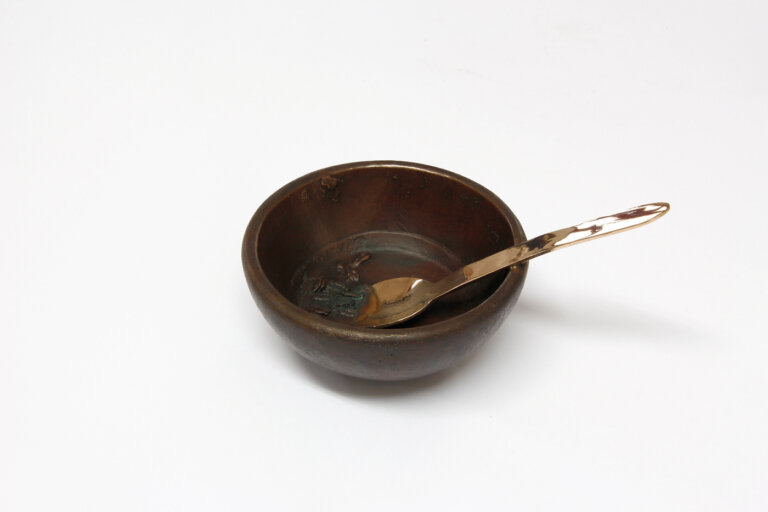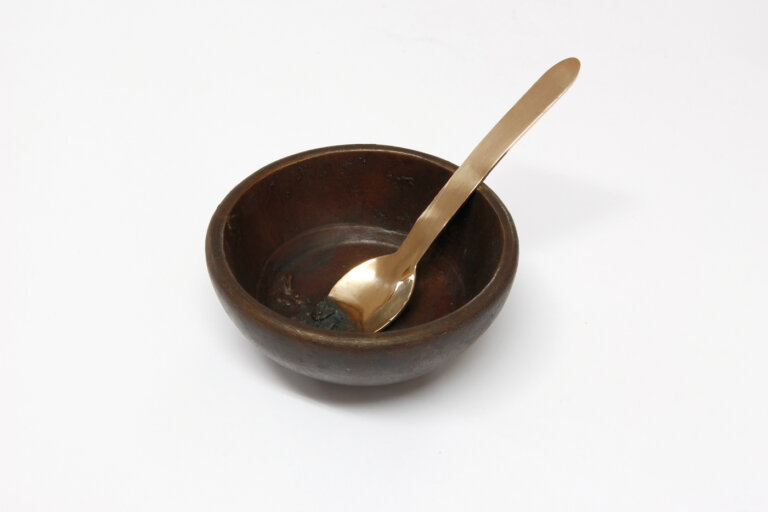After the breakfast
Man sollte beim Anblick einer Person beginnen können, um diese als Skulptur zu porträtieren. Doch wenn die Skulptur nicht die Person selbst zeigen soll, sondern deren Alltag, wo fängt man an? Bei den Resten vom Frühstück – hinterlassen im stressigen Ablauf des Tages!? Diese manifestieren sich klassischerweise auf dem Tisch: Da gibt es etwa halbleere Müslischalen, Reste von Brötchen und Brot, Teller mit Obstresten und anderen Speisen. Oder sind es die Dingen, die im öffentlichen Raum bewusst oder unbewusst liegen blieben? Nun sind sie als verlorene Form in Bronze gegossen und verewigen die Gewohnheiten einer Person, indem sie ihr ein Denkmal setzen.
One should be able to start out with the look of a person to portray him or her in sculpture. But what if the sculpture is to show not the person him or herself, but rather his or her everyday life — what should one with start then? With the leftovers from breakfast, left behind in the stressful course of day!? These traditionally present themselves on the table, in the form of half-empty cereal bowls, leftovers of buns and bread, plates with fruit rinds and other foodstuff. Or are they the things that were consciously or unconsciously left lying around in public spaces? Now cast in the lost-wax process into bronze, they immortalise the habits of a person by raising a monument to him or her.


















